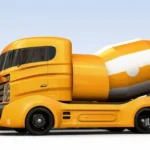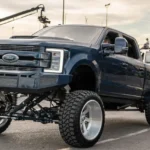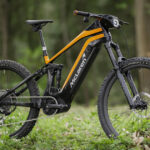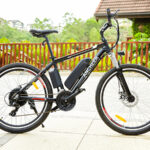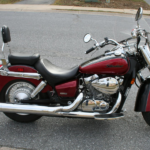Here are The Details about How Fast You Can Ride on A E-Bike
Electric bikes, or e-bikes, have revolutionized the way we travel, blending the joy of cycling with the convenience of motorized assistance. One of the most exciting aspects of e-bikes is the speed they can achieve, offering riders the thrill of faster commutes, more dynamic rides, and the ability to tackle tough terrains with ease. But just how fast can your electric bike go? The answer depends on several factors, including the type of e-bike you own, the motor’s power, and even the terrain you ride on.
Understanding E-Bike Classes and Their Speed Limits
Before diving into specifics, it’s important to understand that electric bikes are generally classified into three categories, each with its own speed limitations:

- Class 1 E-Bikes: These bikes are pedal-assist only, meaning the motor provides assistance only when you are pedaling. They have a top speed of 20 mph (32 km/h). Once you hit this speed, the motor stops assisting, and you’ll have to rely on your own power to go any faster.
- Class 2 E-Bikes: These e-bikes also top out at 20 mph, but they include a throttle feature. With the throttle, you can reach the maximum speed without pedaling, offering a more motorcycle-like experience.
- Class 3 E-Bikes: Known as speed pedelecs, these bikes offer pedal assist up to 28 mph (45 km/h). This makes them ideal for commuters who want to cover more ground quickly. However, in many regions, Class 3 e-bikes are subject to additional regulations, such as helmet requirements and restrictions on bike paths.
| Ebike Class | Max Speed (US) | Max Speed (EU) |
| Class 1 (Pedal-assist) | 20 mph | 25 km/h |
| Class 2 (Throttle-only) | 20 mph | 25 km/h |
| Class 3 (Speed Pedelec) | 28 mph | 45 km/h |
Factors That Influence Your E-Bike’s Speed
While the class of your e-bike sets a legal speed limit, several other factors can affect how fast you can actually go:
- Motor Power: The motor is the engine of your e-bike, and its power is measured in watts. Generally, a higher-wattage motor can provide more assistance, allowing you to reach higher speeds. However, most e-bikes are designed to cut off motor assistance once the legal speed limit is reached.
- Battery Capacity: A larger battery doesn’t just extend your range—it can also sustain higher speeds for longer periods. The battery powers the motor, so a more powerful battery can help maintain speed, especially on longer rides or when tackling hills.
- Rider Input: Your pedaling effort plays a crucial role in determining how fast you can go. On a flat surface with little wind, a strong rider can exceed the motor’s assistance speed on a Class 1 or Class 3 e-bike by putting in extra pedal power.
- Terrain: The surface you ride on and the slope of the terrain will significantly impact your speed. Smooth, flat roads allow for higher speeds, while rough terrain, gravel, or steep inclines can slow you down, regardless of your motor’s power.
- Weight: The combined weight of the rider and the bike can affect acceleration and top speed. Lighter bikes and riders can generally achieve higher speeds more easily.





